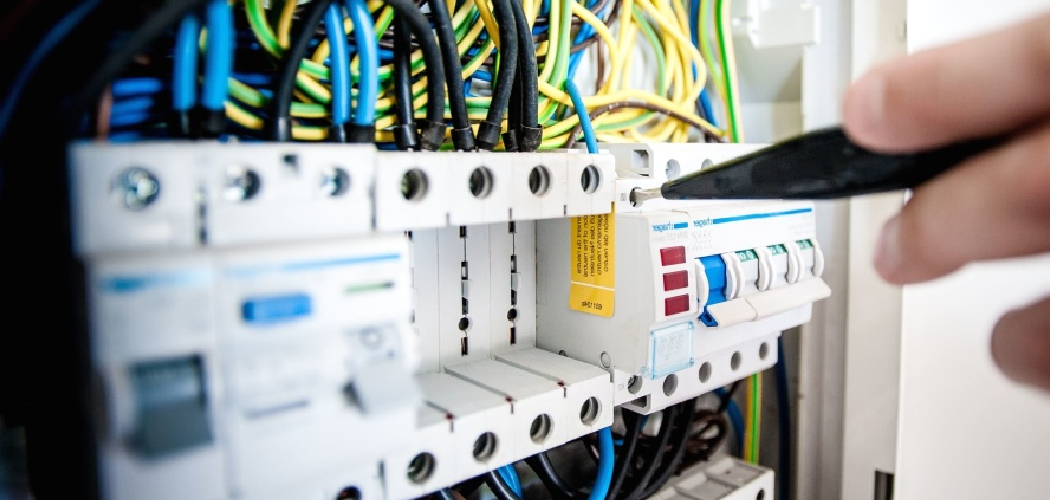Are you looking for a reliable and accurate method to test safety switches? Look no further! This guide will discuss everything you need to know about testing safety switches, including their importance, different types, and the step-by-step process of testing them.
Testing safety switches is a critical step in ensuring the safety and reliability of electrical systems. Safety switches are designed to prevent electrical hazards by quickly disconnecting power during an issue, such as a fault or leakage. Regular testing is essential to confirm that these devices function correctly and comply with safety standards.
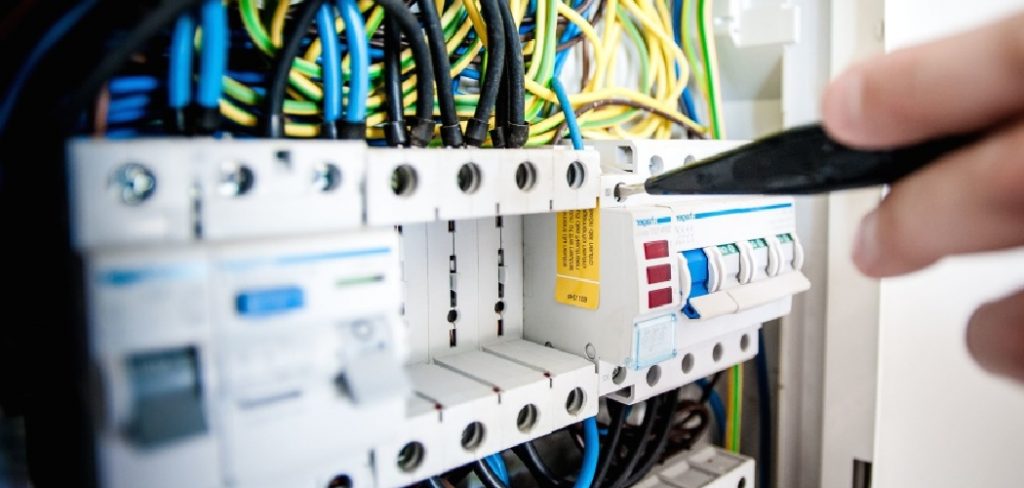
This guide on how to test safety switches will walk you through the steps to safely and effectively test safety switches, helping to reduce risks and maintain a safe environment.
What Are the Benefits of Testing Safety Switches?
Testing safety switches regularly has several benefits, including:
- Ensuring Proper Functioning: By testing safety switches regularly, you can ensure that they are in good working condition and will function as intended during an emergency.
- Identifying Potential Issues: Regular testing can help identify any issues with the safety switch, such as faulty wiring or malfunctioning mechanisms. This allows for timely repairs or replacements before a significant problem occurs.
- Complying with Regulations: In many countries, testing safety switches is mandatory to comply with electrical safety regulations. Regular testing ensures that your electrical systems meet these standards and avoids legal implications.
- Maintaining a Safe Environment: Safety switches protect individuals from electrical hazards. By regularly testing and maintaining these switches, you ensure the safety of yourself, your family, and anyone else who may come into contact with your electrical systems.
- Preventing Electrical Fires: Faulty wiring or malfunctioning safety switches can lead to electrical fires, causing damage to property and putting lives at risk. Regularly testing these switches can help identify potential risks and prevent them from escalating into a dangerous situation.
What are the Types of Safety Switches?
Three types of safety switches are commonly used in residential and commercial settings: residual current devices (RCDs), circuit breakers, and surge protectors.
- Residual Current Devices (RCDs): Also known as ground fault circuit interrupters (GFCIs), RCDs monitor the flow of electricity through a circuit and quickly cut off power if there is any imbalance or leakage. This helps prevent electric shocks and potentially fatal electrocution. RCDs are typically installed in places where water is present, such as bathrooms, kitchens, and outdoor areas.
- Circuit Breakers: These switches monitor the current flowing through a circuit and automatically shut off power if it exceeds a safe level. They protect against overloading circuits and help prevent electrical fires.
- Surge Protectors: These devices protect against power surges, which are sudden increases in voltage that can damage electronic equipment. Surge protectors absorb excess voltage and redirect it to the ground, keeping your devices safe.
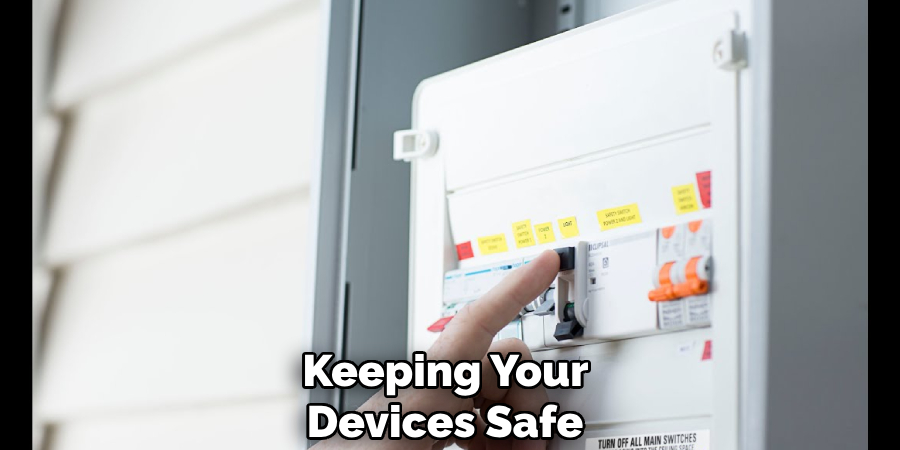
10 Easy Steps on How to Test Safety Switches
Step 1. Locate Your Safety Switches
Safety switches are typically located within your electrical switchboard, often in a visible and accessible area such as your garage, basement, or laundry room. They are usually labeled and can be identified by their distinct test button, often marked as “T” or “Test.” Ensure you clearly understand your switchboard layout and consult any provided documentation if you’re unsure. Always approach the switchboard cautiously and ensure the area is well-lit before proceeding.
Step 2. Inform Household Members
Before performing any testing or maintenance on the switchboard, ensure that all household members are informed. This precautionary step helps prevent accidental disruptions and ensures everyone’s safety while the work is performed. Communicate the purpose of the task, the areas of the house that may be affected temporarily, and the importance of not interfering with the switchboard or surrounding equipment. This way, you can minimize confusion and maintain a safe environment.
Step 3. Turn Off Sensitive Electronics
Before proceeding, turning off and unplugging any sensitive electronics in your household is crucial. Devices like computers, televisions, gaming consoles, or home theater systems can be vulnerable to power fluctuations or sudden outages. Disconnecting them from power sources prevents potential damage caused by electrical surges or interruptions during the process. This step protects valuable equipment and ensures peace of mind while working on electrical systems.
Step 4. Press the ‘Test’ Button
Once all sensitive electronics are safely unplugged, locate the ‘Test’ button on your electrical panel or circuit breaker. Pressing this button is critical to ensuring the functionality of the system’s safety mechanisms. When you press the ‘Test’ button, the circuit breaker should trip, cutting off the flow of electricity. This action confirms that the breaker is operating correctly and will protect your home from electrical faults.
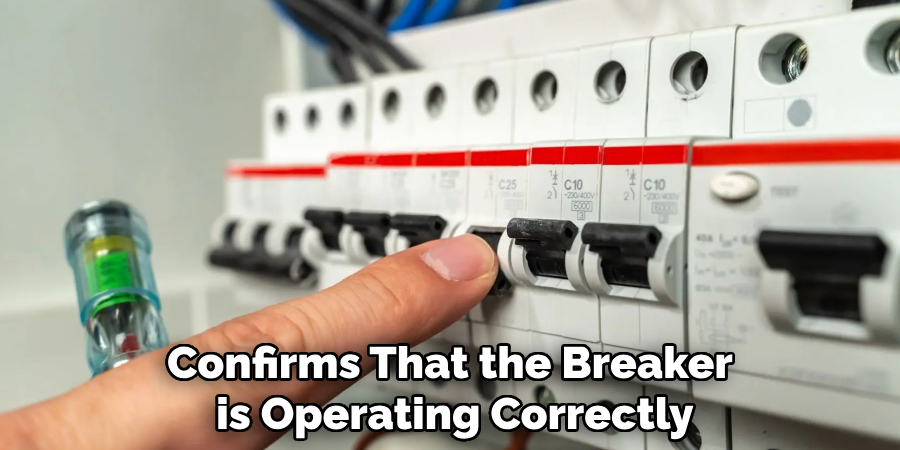
Step 5. Check the Power
After testing the circuit breaker, check the power in the affected area of your home. Turn the breaker switch back to the “ON” position and verify that electricity has been restored. Check the lights, outlets, or appliances connected to the circuit to ensure they function correctly. If the power is not restored, double-check that the breaker is fully switched on and inspect for any additional issues. If the problem persists, it is recommended to contact a licensed electrician to avoid potential safety risks or further damage.
Step 6. Reset the Safety Switch
Resetting the safety switch is essential after addressing the issue. Locate the safety switch, which is typically found in the main electrical switchboard. Ensure all appliances and devices connected to the affected circuit are switched off to prevent a sudden power surge. Once confirmed, push the safety switch back to the “ON” position. If the switch resets successfully and stays in place, restore power to your appliances individually to identify potential faults. However, if the safety switch trips again immediately, an underlying electrical problem may need attention, and you should contact a licensed electrician for further assistance.
Step 7. Repeat for Each Switch
Repeat this process for each circuit switch in your electrical panel. Make sure to work methodically, turning off and then resetting each switch one at a time. Pay close attention to any switches that fail to reset or trip repeatedly, which could indicate an issue specific to that circuit. Document any irregularities or failures during the process, as this information can be helpful for a professional electrician. Proceed only if you feel confident, and always prioritize safety by keeping your hands dry and working in a well-lit area.
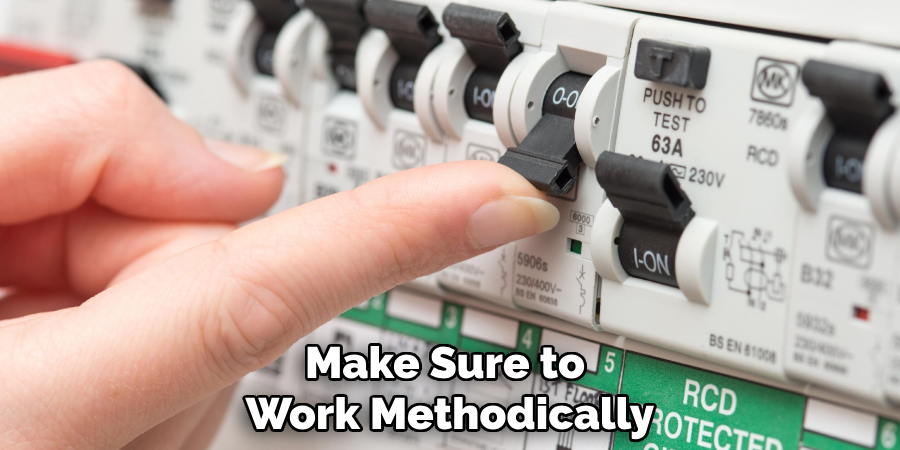
Step 8. Inspect the Switchboard
Carefully open the switchboard panel and visually inspect its components for any signs of damage or wear. Look for burnt marks, loose wires, or corrosion, indicating underlying issues. Ensure that all connections are secure and that no debris or foreign objects are inside the panel. Use a flashlight if necessary to check hard-to-see areas. If you notice anything unusual or unsafe, do not attempt to fix it yourself; instead, contact a licensed electrician immediately.
Step 9. Document the Results
Begin by creating a detailed record of your inspection findings. Note the condition of each component, highlighting any issues such as damaged wires, burnt marks, or corrosion. Include photographs if possible to provide a visual reference. Be sure to document the date and time of the inspection, as well as any actions taken or recommended, such as contacting a licensed electrician. Maintaining accurate records helps ensure proper follow-up and provides a valuable resource for future inspections or troubleshooting.
Step 10. Schedule Maintenance if Needed
If any issues that require repair or replacement are identified during the inspection, schedule maintenance as soon as possible to address them. Contact a licensed professional to perform the necessary work, ensuring all repairs comply with relevant safety standards and regulations. Provide detailed notes about the maintenance schedule, including the date, time, and work scope to complete. Regular maintenance helps extend the lifespan of electrical components, reduces the risk of future malfunctions, and ensures the continued safe operation of the system.
By following these tips and staying up-to-date with regular maintenance, you can ensure that your electrical system remains safe and reliable for years.
5 Things You Should Avoid
- Avoid Testing Without Proper Knowledge
Never test safety switches without understanding the correct procedures and safety guidelines. Incorrect handling can damage the switch or put you at risk of electrical shock.
- Do Not Use Improper Tools
Using tools not designed for electrical testing can lead to inaccurate results or cause harm to the switch. Always use the appropriate testing equipment recommended by professionals.
- Avoid Skipping Power Isolation
Testing a safety switch without isolating the power can result in serious injuries. Always ensure the electrical circuit is turned off and isolated adequately before performing any tests.
- Do Not Ignore Visible Damage
If a safety switch appears damaged or faulty, do not attempt to test it. Instead, seek professional help to assess and replace the switch if necessary.
- Avoid Rushing Through Tests
Conducting tests hastily can lead to mistakes and oversight. Take your time to follow each step carefully to ensure accurate results and maintain safety during the process.
Following these guidelines and ensuring proper safety measures are in place, you can effectively test a safety switch and ensure its functionality.
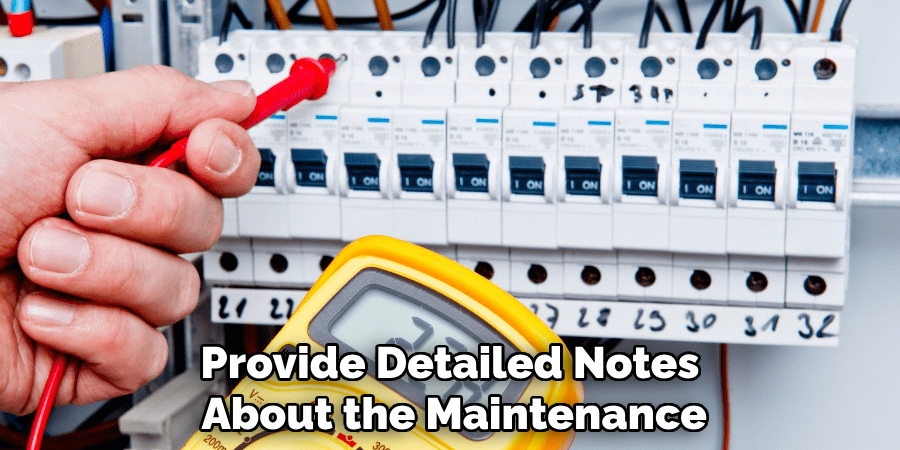
Conclusion
How to test safety switches is a critical task to ensure the proper functioning of essential safety mechanisms.
By adhering to the outlined steps, such as understanding the specific type of switch, diagnosing any faults with care, and prioritizing safety at every stage, you can identify potential issues accurately. Always remember to take a cautious and methodical approach while avoiding unnecessary risks.
If there is any uncertainty, consulting a qualified professional is highly recommended to guarantee the safety and functionality of the equipment.

